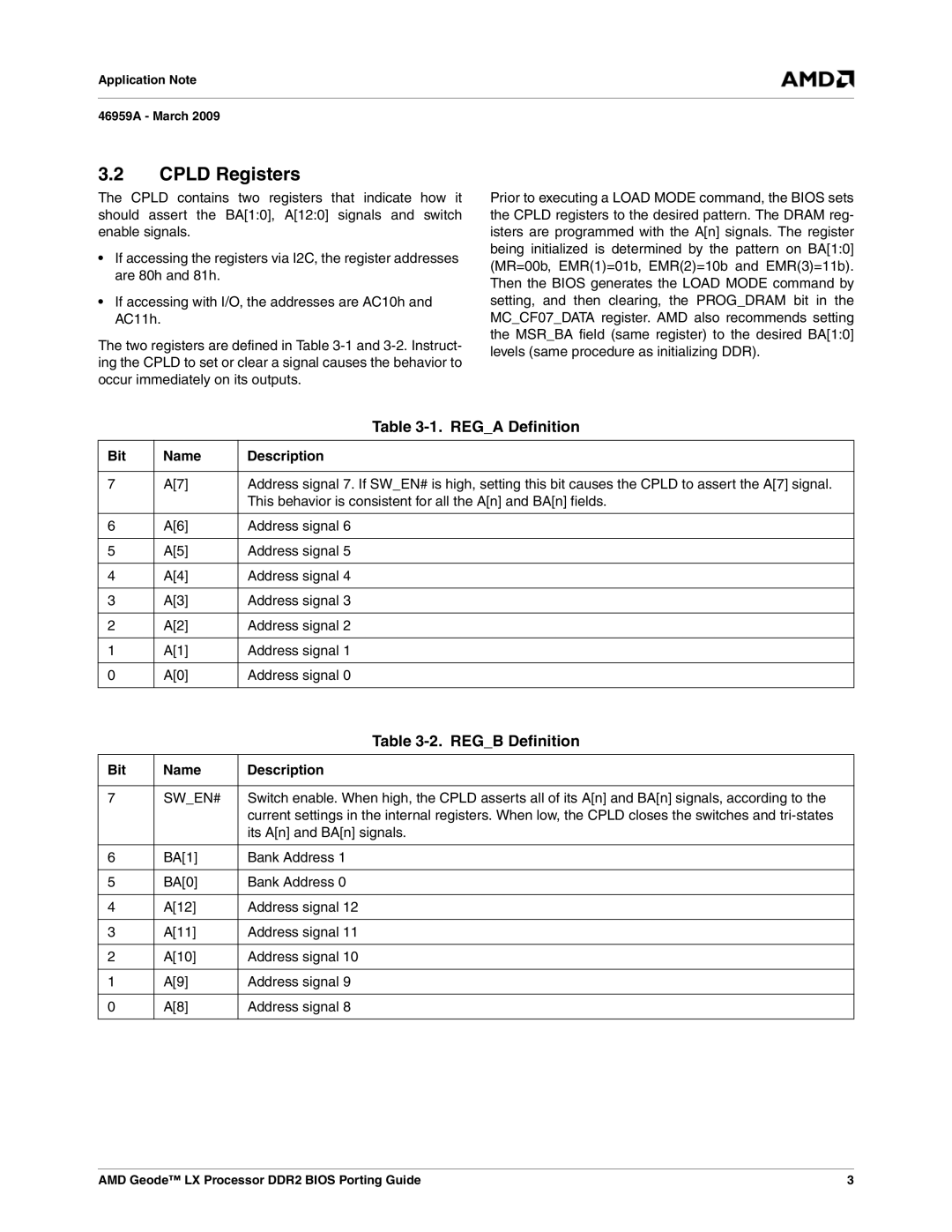
Application Note
46959A - March 2009
3.2CPLD Registers
The CPLD contains two registers that indicate how it should assert the BA[1:0], A[12:0] signals and switch enable signals.
•If accessing the registers via I2C, the register addresses are 80h and 81h.
•If accessing with I/O, the addresses are AC10h and AC11h.
The two registers are defined in Table
Prior to executing a LOAD MODE command, the BIOS sets the CPLD registers to the desired pattern. The DRAM reg- isters are programmed with the A[n] signals. The register being initialized is determined by the pattern on BA[1:0] (MR=00b, EMR(1)=01b, EMR(2)=10b and EMR(3)=11b). Then the BIOS generates the LOAD MODE command by setting, and then clearing, the PROG_DRAM bit in the MC_CF07_DATA register. AMD also recommends setting the MSR_BA field (same register) to the desired BA[1:0] levels (same procedure as initializing DDR).
|
| Table |
Bit | Name | Description |
|
|
|
7 | A[7] | Address signal 7. If SW_EN# is high, setting this bit causes the CPLD to assert the A[7] signal. |
|
| This behavior is consistent for all the A[n] and BA[n] fields. |
|
|
|
6 | A[6] | Address signal 6 |
|
|
|
5 | A[5] | Address signal 5 |
|
|
|
4 | A[4] | Address signal 4 |
|
|
|
3 | A[3] | Address signal 3 |
|
|
|
2 | A[2] | Address signal 2 |
|
|
|
1 | A[1] | Address signal 1 |
|
|
|
0 | A[0] | Address signal 0 |
|
|
|
|
| Table |
Bit | Name | Description |
|
|
|
7 | SW_EN# | Switch enable. When high, the CPLD asserts all of its A[n] and BA[n] signals, according to the |
|
| current settings in the internal registers. When low, the CPLD closes the switches and |
|
| its A[n] and BA[n] signals. |
|
|
|
6 | BA[1] | Bank Address 1 |
|
|
|
5 | BA[0] | Bank Address 0 |
|
|
|
4 | A[12] | Address signal 12 |
|
|
|
3 | A[11] | Address signal 11 |
|
|
|
2 | A[10] | Address signal 10 |
|
|
|
1 | A[9] | Address signal 9 |
|
|
|
0 | A[8] | Address signal 8 |
|
|
|
AMD Geode™ LX Processor DDR2 BIOS Porting Guide | 3 |
